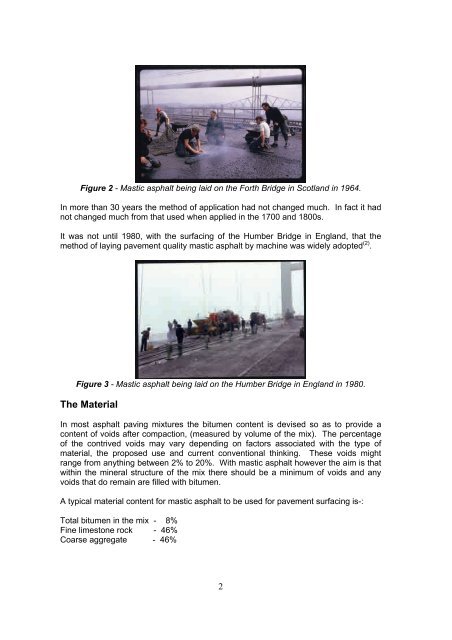MASTIC ASPHALT FOR PAVEMENT SURFACING
MASTIC ASPHALT FOR PAVEMENT SURFACING
MASTIC ASPHALT FOR PAVEMENT SURFACING
You also want an ePaper? Increase the reach of your titles
YUMPU automatically turns print PDFs into web optimized ePapers that Google loves.
Figure 2 - Mastic asphalt being laid on the Forth Bridge in Scotland in 1964.<br />
In more than 30 years the method of application had not changed much. In fact it had<br />
not changed much from that used when applied in the 1700 and 1800s.<br />
It was not until 1980, with the surfacing of the Humber Bridge in England, that the<br />
method of laying pavement quality mastic asphalt by machine was widely adopted (2) .<br />
Figure 3 - Mastic asphalt being laid on the Humber Bridge in England in 1980.<br />
The Material<br />
In most asphalt paving mixtures the bitumen content is devised so as to provide a<br />
content of voids after compaction, (measured by volume of the mix). The percentage<br />
of the contrived voids may vary depending on factors associated with the type of<br />
material, the proposed use and current conventional thinking. These voids might<br />
range from anything between 2% to 20%. With mastic asphalt however the aim is that<br />
within the mineral structure of the mix there should be a minimum of voids and any<br />
voids that do remain are filled with bitumen.<br />
A typical material content for mastic asphalt to be used for pavement surfacing is-:<br />
Total bitumen in the mix - 8%<br />
Fine limestone rock - 46%<br />
Coarse aggregate - 46%<br />
2


